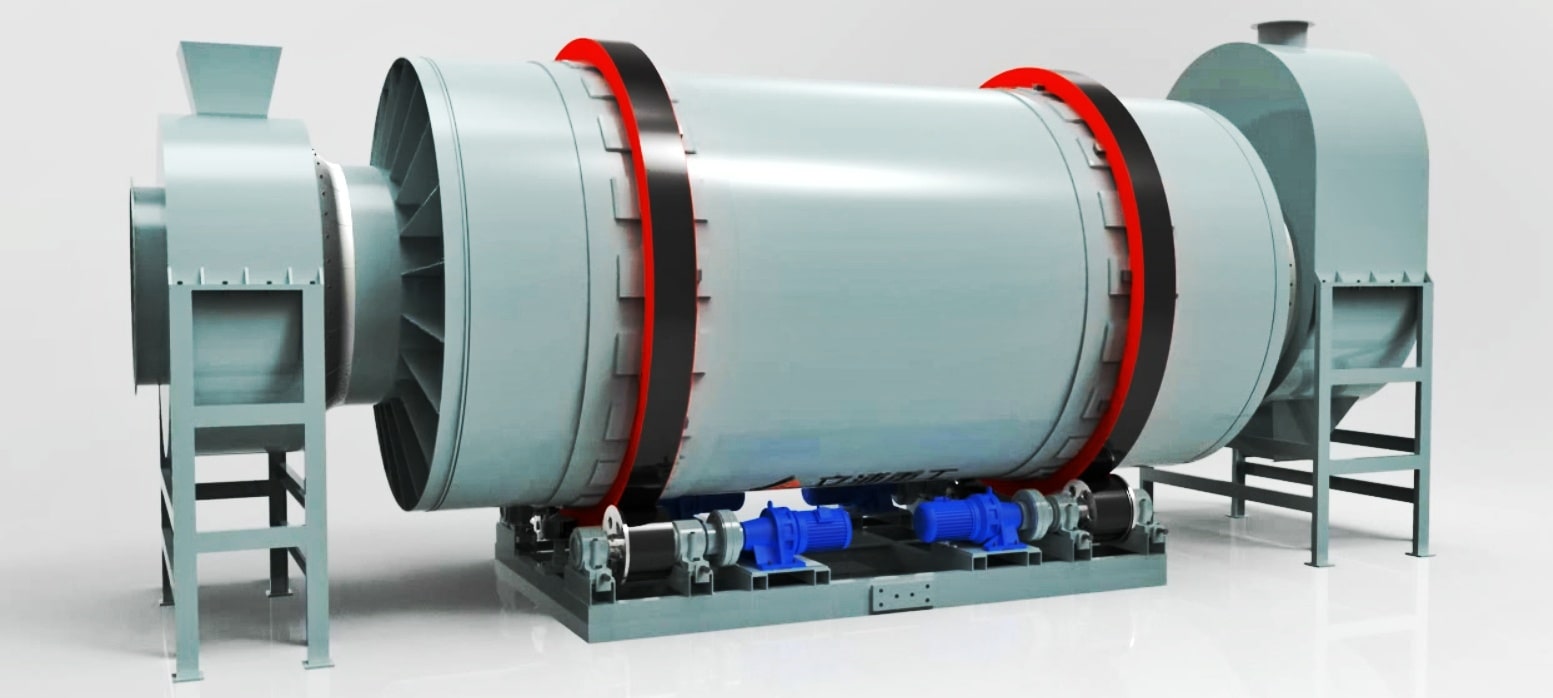Table of Contents
Principle of the drum dryer
In a drum dryer, a heated hollow metal drum rotates on its longitudinal axis, which is partially dipped in the solution to be dried. The solution is carried as a film on the surface of the dryer and dried to form a layer. A suitable knife scraps the dried material, while the drum is rotating.
Construction of the drum dryer
The construction of a drum dryer is shown in Figure 1.1. It consists of a horizontally mounted hollow steel drum of 0.6 to 3.0 meters in diameter and 0.6 to 4.0 meters in length, whose external surface is smoothly polished. Below the drum, the feed pan is placed in such a way that the drum dips partially into the feed. On one side of the drum, a spreader is placed and on the other side, a doctor’s knife is placed to scrap the dried material. A storage bin (or a conveyor) is placed the knife to collect the material.

Working on a drum dryer
Steam is passed inside the drum. The heat transfer coefficient of the drum metal is high. Drying capacity is directly proportional to the surface area of the drum. Heat is transferred by conduction to the material. Simultaneously drum is rotated at a rate of 1-10 revolutions per minute. The liquid material present in the feed pan adheres as a thin layer to the external surface of the drum during its rotation. The material is completely dried during its journey in slightly less than one rotation (i.e., from one side to another side of the drum). The dried material is scrapped by the doctor’s knife, which then falls into a storage bin. The time of contact of the material with hot metal is 6 to 15 seconds only. Therefore, processing conditions such as film thickness, and steam temperature are closely controlled.
Pharmaceutical Uses:
A drum dryer is used for drying solutions, slurries, suspensions, etc. The products dried are milk products, starch products, Terrous salts, suspensions of zinc oxide, suspension of kaolin, yeast, pigments, malt extracts, antibiotics, glandular extracts, insecticides, DDT, calcium, and barium carbonates.
Advantages:
- In a drum dryer, drying time is less, only a few seconds. Therefore, heat-sensitive materials can be dried.
- A drum dryer occupies less space, as it is compact when compared to a spray dryer.
- As a thin film of liquid is formed on the large heating surface, rates of heat transfer and mass transfer are high.
- The product obtained is completely dried and is in the final form.
Disadvantages:
- The maintenance cost of a drum dryer is higher than a spray dryer,
- Skilled operators are essential to control feed rate, film thickness, speed of rotation, and temperature.
- It is not suitable for solutions of salts with less solubility.
Variants: A vacuum drum dryer encloses both drum and feed lines in a vacuum chamber to facilitate the drying of heat-sensitive materials. It is suitable for drying drugs susceptible to oxidation and to recover solvents.
On a large scale, instead of one drum, two drums are set in parallel. rotating in opposite directions with a common feed inlet. The feed can be introduced onto the drum either by spraying it on the top or by introducing it from the bottom.
Make sure you also check our other amazing Article on : Tray Dryer
